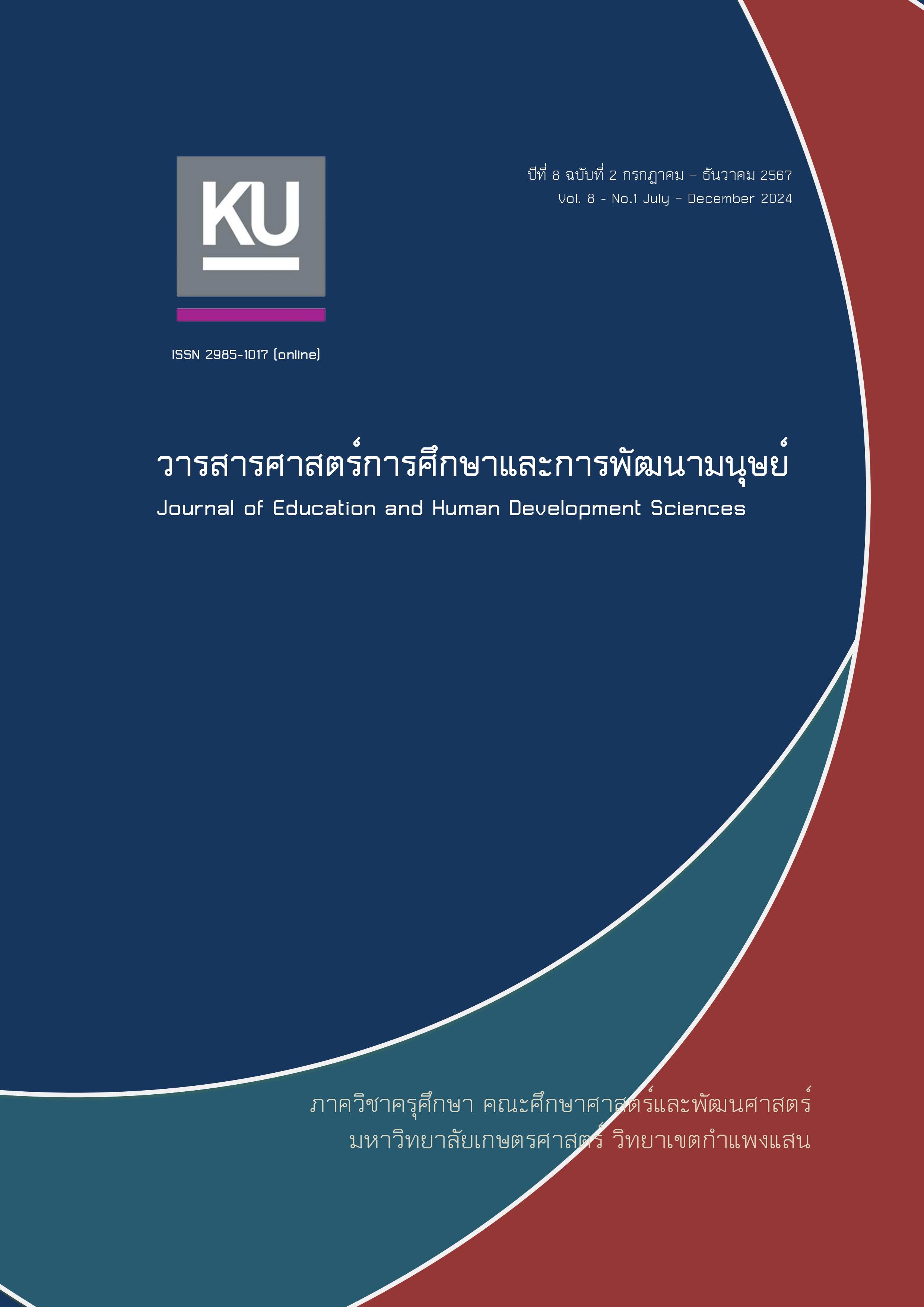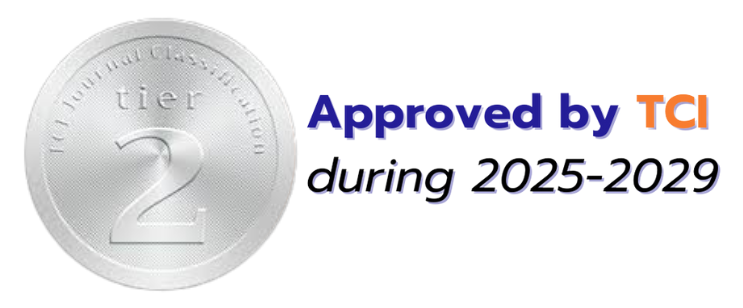พฤติกรรมการออกกำลังกายในสภาวะแพร่ระบาดเชื้อไวรัสโควิด 19 ของวัยรุ่น
关键词:
พฤติกรรมการออกกำลังกาย, เชื้อโควิด 19摘要
การวิจัยครั้งนี้มีจุดมุ่งหมายเพื่อศึกษาพฤติกรรมการออกกำลังกายในช่วงแพร่ระบาดเชื้อโควิด 19 ของวัยรุ่น ทั้ง 3 ด้าน คือ ด้านการรับรู้ (Cognitive) ด้านเจตคติ (Affective) และด้านความรู้ (Perceived) โดยกลุ่มตัวอย่างที่ใช้ในการวิจัยครั้งนี้ได้แก่ วัยรุ่นอายุ 12 – 18 ปี ในจังหวัดนครนายกที่อยู่ในพื้นที่เสี่ยงสูง และมีการปริมาณการแพร่ระบาดสูง จำนวน 400 คน จากสูตรการคำนวณของทาโร่ยามาเน่ โดยใช้การสุ่มแบบเฉพาะเจาะจง (Purposive Sampling) โดยเก็บข้อมูลผ่านแบบสอบถามออนไลน์ (Google Form) มีค่าความเที่ยงตรงเชิงเนื้อหา (Content Validity) 0.80 ค่าความเชื่อมั่น (Reliability) 0.72 ทำการวิเคราะห์ข้อมูลโดยการหาค่าเฉลี่ย และส่วนเบี่ยงเบนมาตรฐาน เปรียบเทียบหาความแตกต่างของข้อมูลพฤติกรรมการออกกำลังกาย ผลการวิจัยพบว่า 1) วัยรุ่นเพศหญิงมีการออกกำลังกายที่มากกว่าเพศชาย เพราะเพศหญิงสามารถติดตามการออกกำลังกายจากสื่อต่างๆ และไม่ใช้พื้นที่หรืออุปกรณ์มากจึงสามารถออกกำลังกายได้มากกว่าเพศชาย 2) วัยรุ่นมีจำนวนวันในการออกกำลังกายน้อยกว่า 3 วันต่อสัปดาห์ 3) วัยรุ่นมีเวลาในการออกกำลังกายน้อยกว่า 30 นาทีต่อวัน 4) วัยรุ่นมีจุดประสงค์ในการออกกำลังกายเพื่อสุขภาพ เพื่อรูปร่าง เพื่อความสนุกสนาน เพื่อแข่งขัน เพื่อสังคม และไม่ออกกำลังกายเลย ตามลำดับ 5) พฤติกรรมด้านเจตคติในการออกกำลังกายช่วงแพร่ระบาดเชื้อโควิด 19 ของวัยรุ่นทั้งสองเพศมีความแตกต่างกัน เพศชายมีเจตคติที่ดีกว่าเพศหญิง
##plugins.generic.usageStats.downloads##
参考
Bates, L. C., Zieff, G., Stanford, K., Moore, J. B., Kerr, Z. Y., Hanson, E. D., Barone G. B., Kline, C. E., & Stoner, L. (2020). COVID-19 Impact on Behaviors across the 24-Hour Day in Children and Adolescents: Physical Activity, Sedentary Behavior, and Sleep. Children (Basel, Switzerland), 7(9), 138. https://doi.org/10.3390/children7090138
Faigenbaum A. D. (2018). Youth Resistance Training: The Good, the Bad, and the Ugly-The Year That Was 2017. Pediatric exercise science, 30(1), 19–24. https://doi.org/10.1123/pes.2017-0290
Islam, M. A., Barna, S. D., Raihan, H., Khan, M. N. A., & Hossain, M. T. (2020). Depression and anxiety among university students during the COVID-19 pandemic in Bangladesh: A web-based cross-sectional survey. PloS one, 15(8), e0238162.
Martin, S. A., Pence, B. D., & Woods, J. A. (2009). Exercise and respiratory tract viral infections. Exercise and sport sciences reviews, 37(4), 157.
The World Health Organization. (2020). Novel Coronavirus (2019-nCoV): situation report, 22.
Rothan, H. A., & Byrareddy, S. N. (2020). The epidemiology and pathogenesis of coronavirus disease (COVID-19) outbreak. Journal of autoimmunity, 109, 102433.
Warburton, D. E., Nicol, C. W., & Bredin, S. S. (2006). Health benefits of physical activity: the evidence. CMAJ : Canadian Medical Association journal = journal de l'Association medicale canadienne, 174(6), 801–809. https://doi.org/10.1503/cmaj.051351
Awikunprasert, C., Awikunprasert, P., PhanJum, V., Somjee, N., Konwai, K., & Buttijak, P. (2021).
A study of students attitude towards exercise and physique anxiety during virus covid-19 pandemic in upper north east. Journal of Liberal Arts and Management Science Kasetsart University, 8(2), 101-113.
Poolsawat, V., Petthai, P., & Kongyuen, K. (2015). The Atitude and behavior of exercise in patients with Knee Osteoarthritis. Golden Jubilee Medical Center
##submission.downloads##
已出版
期
栏目
##submission.license##
##submission.copyrightStatement##
##submission.license.cc.by-nc-nd4.footer##






